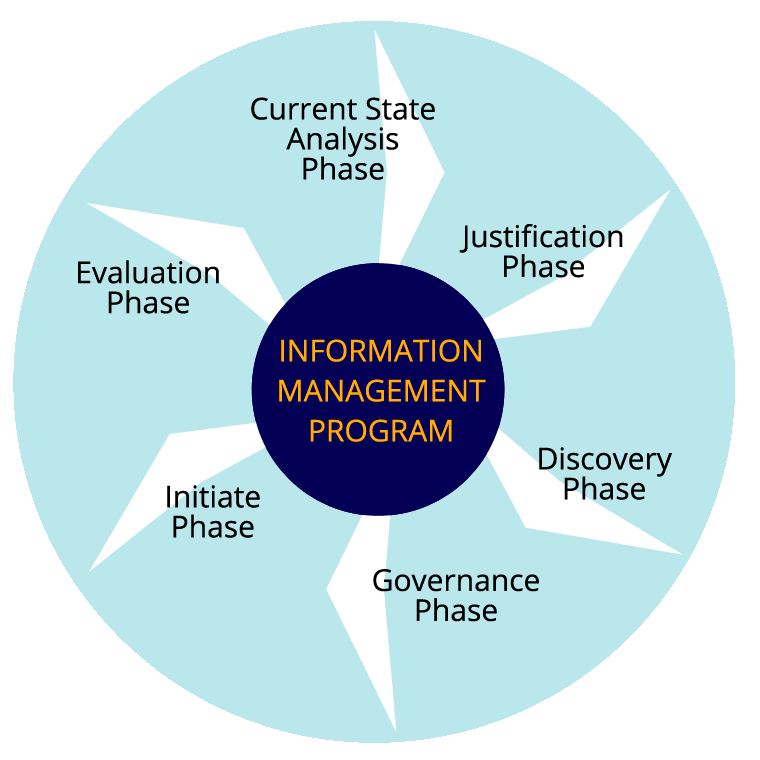
Why Does a Small Business Need a Records Management Program?
The need to manage large volumes of records is not just for big businesses. There are many types of small businesses that must retain paper and digital records for legal reasons for extended periods of time. Accountants, lawyers, contractors and medical professionals are just some of those types of businesses.
A well-defined process of how to handle and dispose of your records must be put into place before problems occur that require producing documents to support a case and to ensure you follow required regulations.
The Successful Business
Successful companies recognize that organizing content gives them a competitive advantaged and that Content Management positions them better for growth. In the past, the benefits of Content Management have been leveraged by larger companies based on efficiencies more than cost savings.
This has been a leading reason why most average sized businesses have not developed Records Management Programs. However, Information Management or Enterprise Records Management (ERM) is now more assessable than ever as software applications integrate records management functionality bringing cost savings to the forefront of the benefits of ERM.
With low cost options such as SharePoint the adoption of Content Management relies on the average company having the same tools and knowledge as the large corporations to develop and design Records and Information Management (RIM) Programs.
Information Management
Developing a Records or Information Management Program is a process that can be planned before deciding on a Records Management (RM) software platform or used for improving business processes and making changes to existing Records Management Programs.
The six phases in the RM process for Program Management are the same phases that the larger corporations use but can be scaled to fit your business needs.
The Information Management Program is not a static part of business. The program will evolve and change with business requirements and technology and should be revised and reviewed on a regular basis.

Figure 1 Phases of an Information Management Program
The Six Phases of an Information Management Program
Each phase builds on the knowledge gained from previous phases and can be used to answer critical decision making questions about the direction and scope of your Enterprise Content Management (ECM) initiative.
Current State Analysis Phase – The review and identification of all existing policies and procedures and business processes that generate content. The Current State Analysis looks at where the organization is at with Records Management and identifies gaps in the current process. This helps answer the questions:
- Do I need Records Management software or a well-organized network file share?
- What are the gaps in policies and procedures?
- Is there a low or high risk of litigation?
- Is the company in compliance?
- Can the organization benefit from Content Management?
- Where are the critical areas to start managing records and content?
Justification Phase – The Business Case for moving forward and developing the records management program. The Business Case answers the questions:
- How big is this project?
- When will I get a return on investment?
- What are my resources?
- Can I do it myself?
Discovery Phase – The identification and analysis of content throughout the enterprise tells us:
- What records are important and need to be managed.
- The volume and growth rate of content thought the organization.
- Metadata and common vocabulary that should be used to search for content.
- The location of content and potential for migration to a central repository.
- How long to keep records and non-vital content.
Governance Phase – Addresses how a Records Management Program will be managed:
- Who will make decisions and own the content?
- Who authorizes the destruction of records?
- Who is the authority in legal circumstances and how to manage the situation?
- Define the required audits and controls for tracking content.
Initiate Phase – Start building the foundation of the Information Management Program by documenting and updating policies, procedures, and standardizing on taxonomy and metadata. Then using the information gathered from the As-Is analysis, Business Case, and Inventory Analysis a comprehensive program can be developed to include:
- Up to date policies and procedures.
- Records Management Software Application selection and development.
- Departmental or Enterprise File Plan with retention schedules.
- Access and Control plan for document security.
Evaluation Phase – Ongoing review and maintenance of the program:
- Plan for the future.
- Make sure the program is relevant.
- Measure your success.
- Modify to meet your business needs.
The practice of Records Management can seem to be regimented to non-industry professionals taking a deep dive into the world of Records and Information Management (RIM).
Someone researching Content Management for the first time might quickly become overwhelmed and decide that RIM is too complex to achieve good results. This is because understanding just the concepts and phases of developing and managing a Records Program is not enough.
You need the tools to be able to take action and take advantage of the standards and best practices that large corporations pay consultants thousands of dollars for. Now, for the first time, the tools of the trade are available for individuals and companies looking to save significant amounts money and time deploying Records Management.
The Records Management Toolkit is a set of templates, spreadsheets, detailed examples and calculators that can be used to jump starts your Information Management Program.
With these tools the same successes and benefits of large corporations can be leveraged by IT Professionals, Project Managers, Program Managers, Records Clerks, and Entrepreneurs by taking advantage of cost and efficiency benefits of a well-planned Information Management Program.
Read this article on How to Use the Records Management Toolkit for more details.



 Cart
Cart


 Facebook
Facebook YouTube
YouTube X
X Search Site
Search Site